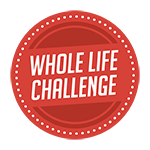 Reading Time: 5 minutes
Reading Time: 5 minutesExercise can become automatic, as easy as the sun rising, a natural and consistent part of your day. Getting to this point, where the benefits of exercise accrue via consistency, takes a bit of work. Luckily, it’s easy to do if you have the right instructions.
Motivation and Reward
The first step, as with all habits, is to find the appropriate motivation. We do better with near-term motivation than long-term reward; we’d rather have small gratification today than a larger payoff in the future. It’s near-as-useless to think about chiseled abs, low body fat, or a future self that will take months or years to achieve. Instead, focusing on the immediate and creating a reward for now, is a sure path to long-term fitness.
Exercise brings several immediate rewards, most notably the post-workout rush of pleasure chemicals in our brains. Endorphins, dopamine, and serotonin, the body’s neurochemical high-fives, come with nearly all types of workouts. You’ve heard of the “runner’s high,” the phenomenon of receding pain and increasing pleasure as the miles add up? It’s caused by the high-fives. To begin habit formation, we’ll want to anticipate and encourage this rush.
Begin your workout by thinking about how good you’ll feel afterward. This can be enough motivation to take the first step, to do the first rep, and can be enough to carry you through to the end, where your brain will be waiting with its soup of elation and happiness.
We can then build on this neurochemical effect with a classic reward, a tangible record of your achievement. Immediately after completing your workout, soaked in the haze of your endorphin high, log your workout. Grab a notebook, a spreadsheet, or a tracking app, and log the exercises completed, miles covered, reps done, weight used, or time elapsed. You’ll get the subtle reward of a visual record of your work, kind of like the pleasure of checking an item off your to-do list.
We’ll also use post-workout nutrition as a source of reward. Eating a piece of lean protein along with your favorite fruit will reward your behavior while speeding recovery for your next workout.
Planning and Action
We want to remove all cognitive friction to exercise. Therefore, you shouldn’t try to plan and execute your workout plan simultaneously. Waking up in the morning, strapping on your gym shoes, and then trying to decide what to do could easily overwhelm your supply of willpower, leading you to stay in bed rather than exercise.
As such, you want to have a plan—decide what exercises you will do and when you’ll do them, and write it down well in advance of your scheduled workout time.
Grab a piece of paper and sketch out a plan, day-by-day, for the next week. Write down your exercise each day and what time you’re going to do it. Then, translate the plan to your calendar, blocking out the time along with the specifics. Each evening, review your plan for the following day, committing it to memory so you don’t have to think about it when the time comes to act.
In addition, taking the time to prepare your workout clothes, post-workout snack, and any additional gear you’ll need in advance of your workout will help reduce cognitive friction. The simplicity of grabbing your assembled gear and executing your predetermined exercise plan removes the roadblocks that could derail habit formation.
Consistency and Cueing
When you’re building an exercise habit, routine is your friend. Rather than attempt to slot workouts randomly into your day, pick a time that will work for your schedule on a consistent basis. This will enable pre-workout cues to form in your life—a very powerful ally in your pursuit of habit.
For instance, if you choose to workout every day immediately upon waking, the act of waking up becomes a cue, a signal it is time to exercise. This cue becomes more robust through repetition and reward; each day you’ll wake up, you’ll exercise, and you’ll receive the neurochemical rush, the joy of a task accomplished, and the animal reward of food-for-effort. Through the consistent repetition of this pattern, you will ingrain the habit deeply: I wake up, I exercise.
You can choose any time of day and still have good effect. You can exercise upon waking, after dropping the kids at school, post-work. Regardless of the time you choose, make it consistent and be cognizant of the cue you’re attaching to exercise: “When “x” happens, I exercise.”
Training for Tomorrow
Any exercise plan can fall victim to injury by way of an overzealous attempt to get too much result too quickly, leaving you unable to carry on with a daily practice. As you get more enthusiastic about exercising and the habit begins to take hold, it would be easy to crank up the difficulty level, adding reps, load, and miles in the pursuit of faster gains. Resist this temptation.
It’s more important that you survive your training and enable the long-haul, avoiding serious setbacks and continuing forward. Realize the benefits of exercise are gradual and you nearly always want to leave something in the tank for tomorrow. Add intensity and volume slowly, with a time horizon measured in months and years rather than days and weeks. This will keep you injury-free and on the path to progress.
The 6-Step Plan for Building an Exercise Habit
Forming an exercise habit is a six-step process:
- Find motivation and amplify the body’s neurochemical rewards for exercise by thinking about how good you’ll feel afterward.
- Provide yourself with additional short-term rewards in the form of workout logging and appealing post-workout nutrition.
- Plan your workouts in advance (at least a week at a time) and put them on your calendar.
- Prepare your clothing, equipment, and post-workout nutrition supplies well in advance of your workout.
- Schedule your workouts for a consistent time of day, and consciously associate them with specific cues.
- Prioritize daily practice over flash-in-the-pan bouts of hard work. Add intensity and volume to your plan slowly and cautiously.
The benefit of incorporating daily exercise into your life is hard to overstate, and these six steps will help you build a durable habit, one that withstands the vagaries and stresses of day-to-day life. Leveraging the steps above, you’ll build on your natural propensity to enjoy routine, reward, and consistency, making exercise a real part of your life and building health and well-being for the long-term.






